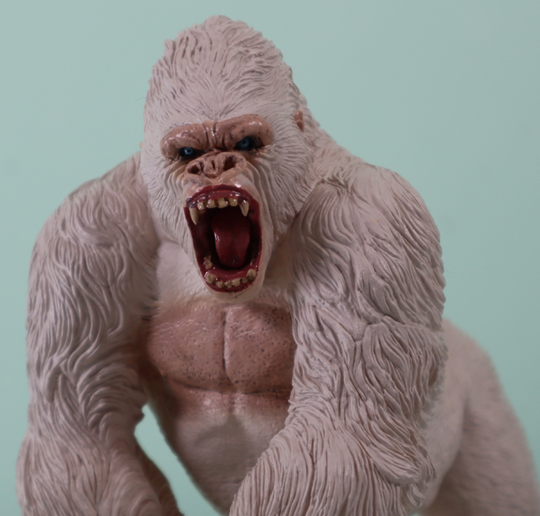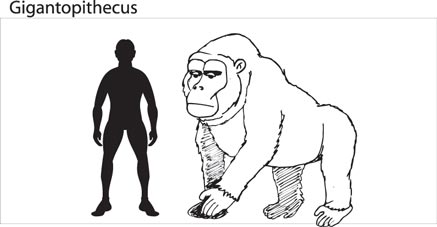The Original King Kong – Gigantopithecus
Gigantopithecus blacki – The Original King Kong
The original King Kong film was released in 1933. Merian C Cooper (who produced the film) along with Edgar Wallace (the writer of the screen play) wrote the story, a twist on “Beauty and the Beast” between them. It was the pioneering special effects engineer Willis H. O’Brien that brought King Kong, the gigantic ape and the prehistoric animals that shared Skull Island to life. The 1925 film “The Lost World” was a very big influence on the original King Kong movie. In the novel, the Lost World, written by Sir Arthur Conan Doyle, a team of daring explorers led by Professor Challenger venture up a remote plateau and encounter prehistoric creatures.
King Kong
Kong the great ape, is worshipped by the natives on Skull Island. Kong falls for the beautiful actress that accompanies the explorers as they visit the island. The actress is offered to Kong as a sacrifice, but the huge simian does not eat her but steals her away into the jungle. Kong is eventually captured and taken to New York as the “Eighth Wonder of the World”. However, the ape escapes from his shackles and meets his end on top of the Empire State Building in perhaps one of the most memorable scenes in the whole of cinema.
A Model of a Giant Gorilla – Rebor Gorilla Model

A fearsome animal! The Rebor Alpha Male Mountain Gorilla replica in 1/11 the scale (Albino). Picture credit: Everything Dinosaur.
Picture credit: Everything Dinosaur
To view the range of Rebor replicas and figures including gorilla models (whilst stocks last): Rebor Replicas.
Giant apes the size of Kong, as far as we can tell from the fossil record did not exist, Kong was the figment of the script writer’s imagination. The fossil record for primates and early human ancestors is actually very incomplete, although there is no credible evidence to suggest that giant gorillas roamed the Earth. However, sometimes real life can reflect fiction. Two years after the film King Kong was released a German palaeoanthropologist Ralph von Koenigswald purchased a very large molar from a Hong Kong pharmacy. Animal teeth and bones are commonly used in Chinese medicine, even today.
Chinese doctors used “dragons teeth” found in remote caves in a number of traditional medicines. Koenigswald correctly identified the tooth as a molar from an unknown, giant primate species. He went onto name the animal Gigantopithecus blacki.
Gigantopithecus blacki
Gigantopithecus fossils are known from South east Asia (China and Vietnam), this animal lived during the Pliocene Epoch but survived into the Pleistocene, before finally becoming extinct approximately 200,000 years ago. Like Orangutans and Gorillas extant species today, the males were much larger than females. A mature male could weigh over 500 kilogrammes and stand 3.1 metres tall.
A Scale Drawing of Gigantopithecus

Picture credit: Everything Dinosaur
Although known from a few fragments of jawbone the rest of the animal has been deduced following studies of extant species of primate. Fortunately, for our ancestors and other hominids such as Homo erectus, Gigantopithecus was a herbivore, feeding mainly on bamboo.

